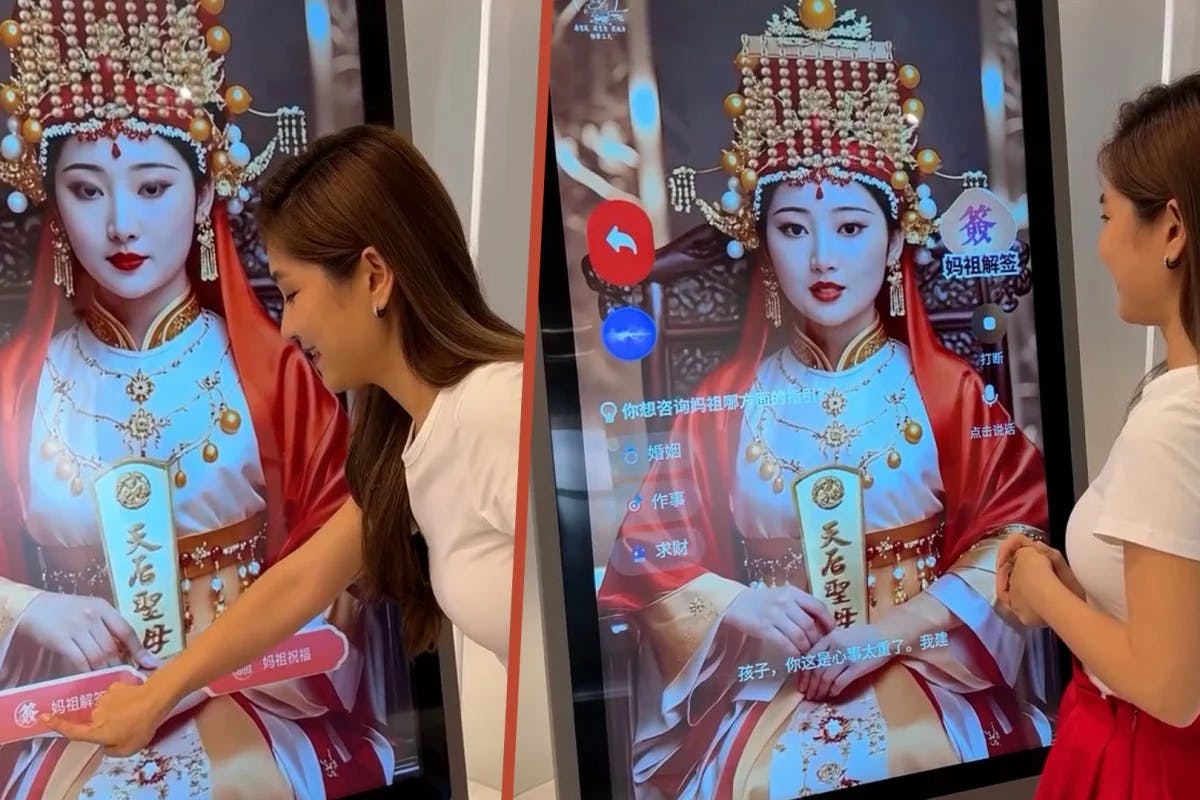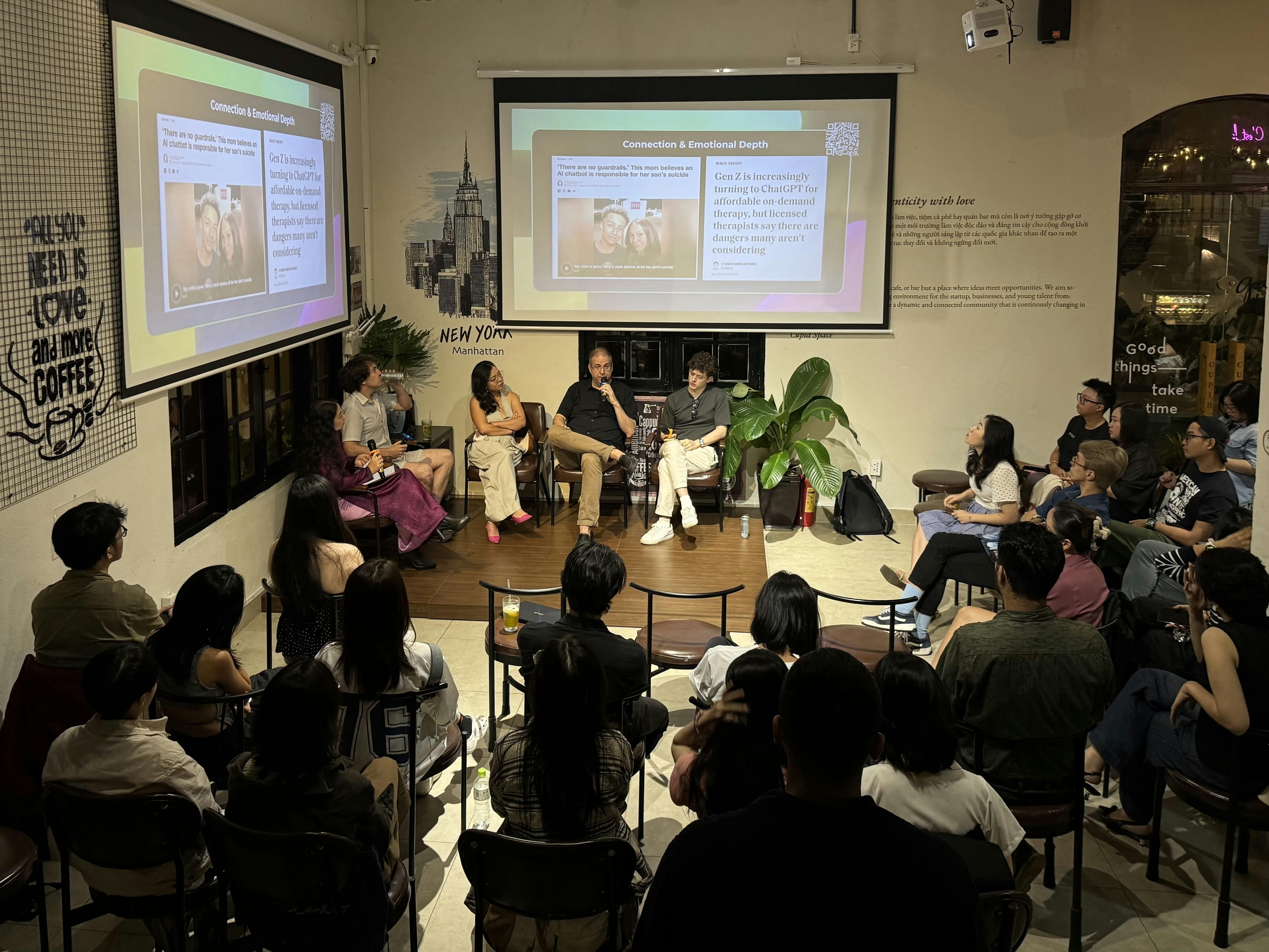In what can likely be considered the world’s first, the Tianhou Temple in Johor, Malaysia, has unveiled the world’s first AI-powered Mazu statue, a digital representation of the revered Chinese sea goddess. Marking the 1,065th anniversary of Mazu’s birth, this innovative project allows devotees to interact with a digital deity displayed on a screen, blending ancient traditions with modern innovation. The deity is portrayed as a beautiful woman wearing a traditional Chinese costume, who is said to resemble a chubby version of Chinese actress Liu Yifei.
Malaysian technology company Aimazin, the company behind Mazu, created the AI statue to respond to worshipers’ questions and offer blessings. By embodying a deity in digital form, the Tianhou Temple aims to make Mazu’s guidance more accessible and relevant, particularly to younger, tech-savvy generations. Unlike traditional statues, which serve as symbolic focal points for prayer, AI Mazu actively engages with worshipers, offering personalized responses.
Devotees can ask for advice, seek blessings, or discuss personal concerns, and the AI responds with soothing, thoughtful answers. These interactions, delivered in a calm and comforting tone, reflect the nurturing spirit of Mazu while leveraging AI’s ability to process and respond to human queries in real time. But this technology comes with concerns over the role of AI in the spiritual realm, its benefits, and its potential challenges.
One of the greatest advantages of AI Mazu is the fact that it makes spiritual guidance highly accessible as it does not rely on human interaction, schedules, and energy. Devotees can access Mazu at all hours without the need for a human, such as a priest. Worshipers can seek advice whenever it is needed, allowing them to develop a deeper connection to their faith. The younger generation, accustomed to digital interfaces, can now be exposed to cultural and religious traditions that might otherwise disappear in a rapidly modernizing world.
Of course, the introduction of technology to any centuries-old, time-honored tradition will raise concerns. While AI Mazu offers accessibility, it lacks the human touch – the emotional connection and personal element that only human spiritual leaders can provide. Priests and temple elders provide nuanced guidance based on years of experience and personal relationships with devotees. Naturally, even with the most advanced algorithms, AI will struggle to replicate this human interaction.
Religious figures are concerned that if devotees become accustomed to seeking guidance from AI-deities, they may neglect human interaction, and the jobs of spiritual elders and priests will become defunct. And what happens in a power outage or software disruption? Will people then be left without AI or a human for spiritual guidance? Such a situation would be a calamity.
It is too soon to rely solely on technology, as there are too many risks, dangers, and unknowns. There are still too many ethical and theological debates, and many people still believe that representing a divine figure through AI is an unwanted deviation from tradition, is disrespectful, and reduces a revered goddess such as Mazu to a digital interface. At the end of the day, its lack of consciousness or spiritual awareness prevents it from fully embodying the divine essence of Mazu.
An over-reliance on technology will diminish human connection since AI cannot replicate the empathy and understanding provided by human spiritual leaders. There are concerns that AI technology in temples is incompatible with sacred traditions and practices.
The introduction of AI Mazu at the Tianhou Temple marks a bold step in redefining religious practice for the digital age. By offering accessible, personalized, and culturally significant interactions, AI Mazu demonstrates the potential of technology to enhance spirituality and engage new generations. However, it also raises important questions about authenticity, human connection, and the ethical implications of embodying the divine in AI.









